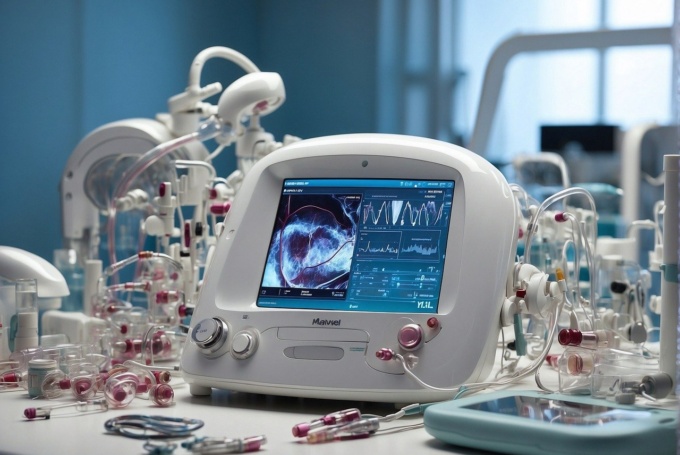As part of our ‘Female Leaders: Inspiring Together’ series, we interviewed Dr Melissa Toyos – MD Partner of Toyos Clinic – about her career journey as an ophthalmic surgeon and why managing work-life balance means accepting you can’t do everything.
Thanks for joining us and taking part in this campaign. Please could you tell us a little bit about your current role?
I am an ophthalmic surgeon and my husband and I practice together in Nashville, Memphis and New York City, doing comprehensive ophthalmology. We do everything from medical to surgical ophthalmology. I moved into ocufacial aesthetics probably about 20 years ago. I was in practice with a group of men and nobody wanted to really do aesthetics. I was doing a lot of lids, both upper lids and lower lids. I introduced Botox to the practice and I remember they famously said, ‘I don’t think anybody’s going to pay to get shots in their face, but if you want to try it, go ahead’ and I basically just built it from there. I was a biochemist before I went to medical school, so I like to use my knowledge of chemistry in skin care and we have developed our own line called Toyos Clinic. I’ve been amazed at the sort of intersection of some of the things with ophthalmology and aesthetics such as the glaucoma medication that turned out to be Latisse and grows both eyelashes and scalp hair and intense pulsed light being used for both skin conditions and dry eye and ophthalmology so it has been a natural step into the aesthetics world.
What inspired you to get into the medical space initially?
When I was six, I had trouble seeing in class and I couldn’t see the board, I was squinting. My teacher suggested to my mom that she take me to the eye doctor, so she did. They got me some glasses and for the first time in my memory, I could see the leaves on the trees and the bricks on the wall and I was so astounded. I just thought, this is a miracle. It felt like a miracle to me and as I went through medical school, there was so much that was attractive about ophthalmology. We had lasers, cataract surgery, things that can literally change people’s lives in an afternoon, you know, in the space of 5, 10, 15 minutes. So, it was a lot of gratification. People could tell the difference and they could tell that we were helping them. The eye is very complex, so there was just so much to learn that I was excited to get started.
What barriers have you encountered during your career growth and as a female leader in the space?
“I found myself nine months pregnant and 36 hours away from my scheduled delivery trying to negotiate my maternity leave with my partners and my office manager.”
I mentioned that I started practice with a group of men. This was in the 1990s and the Susan B. Anthony coin had been introduced to the US in the 70s. I thought that all of the women’s work movement had been solved and addressed, but as it turns out, there was no maternity leave policy for physicians. I found myself nine months pregnant and 36 hours away from my scheduled delivery trying to negotiate my maternity leave with my partners and my office manager. I did not think that I would be groundbreaking in the 1990s, but the fact was that my partners had never run into that issue before – all their partners and physicians had all been men.
How do you manage a work-life balance?
I talk about work-life balance being more like downhill skiing at 100 miles an hour, just almost out of control. We have three girls and I remember feeling like I was spending so much energy and I wanted to do a good job with everything I was doing, whether it was work or home life. There just didn’t seem to be a place to cut corners and everything mattered. So, there were times when work took the front seat and my girls will definitely tell you that they traveled with me. Sometimes they know as much as I do about ophthalmology topics because they’ve heard me lecture on it and they’ve been to my dinner presentations. As they got older, they became part of the family business in a different way: they learned how to work the front desk and to perform some technician duties, and two of the oldest ones are heading into medicine as we speak, which is great. Then there were times where I really just had to draw a line, for example sometimes I couldn’t attend or speak at a convention because my daughter had a dance recital. So, I think trying to just balance and making sure that it feels about right in your heart is the best we can do as women because we truly can’t do everything.
What accomplishment are you the proudest of?
Making the top 300 cataract surgeons was one of my most proud accomplishments. I followed in the footsteps of one of my mentors taking over his practice when he retired and I love doing cataract surgery. I was the only female partner in one of the top 3 ophthalmology practices in the US. I’ve continued doing a lot of cataract surgery and research because I’m curious about how we can work with companies to improve the lives of our patients. It was really an honor to be named top 300 because I had devoted so much of my life to it and worked to a place where it was a big part of my practice. Once I felt like I had mastered that skill, I turned my attention to other goals. So, the aesthetics world became a new goal for me, and I began to dive into the aesthetics world and the lasers, and found a fabulous laser in Italy, very much a sleeper product called the MIXTO. We’ve been doing so much with it around eyes, rejuvenation, noninvasive, and it could be a really nice alternative to surgical blepharoplasties. I’m also the author of MIXTO Laser Lift and then during Covid-19, I wrote a book on hair science explaining what I’ve learned about growing it and keeping it, both of which I am very proud of.
What has been the biggest challenge that you’ve faced in your career and how did you manage to overcome that?
I think that this past year has been a challenge for almost everyone but especially frontline health care workers and small business owners. My husband and I fall into both categories so navigating the challenges of the unknown social, physical and economic hardships of COVID has been a learning experience unlike any other for me. My husband and I take trauma call and continued to cover essential services during the lockdown so we worked the entire time. There were people that we treated with COVID, people with normal run-of-the-mill issues and we unfortunately saw a lot of domestic violence as people were stressed, anxious and maybe trapped at home in difficult situations. Thankfully, things seem to be returning to normalcy but we are not there yet. I have a feeling that we will continue to learn things from this pandemic for many years to come.
What do you see as the main challenges for women within the industry?
“I just read a statistic that in some areas of science, women on the podium are asked 12% more questions, as if they’re not quite as credible or they’re not quite as believed.”
My industry is still very much dominated by older white men, and that’s something that I think a lot of people face in the working world. I just read a statistic that in some areas of science, women on the podium are asked 12% more questions, as if they’re not quite as credible or they’re not quite as believed. So, it is still a little bit tough to be a woman in STEM. When I went to medical school, it was 33% women, which was the highest number it had ever been. Now the numbers are greater than 50% and I think as more women enter the field, we’ll have our role models and it won’t be such an unusual undertaking. No one will be inventing maternity policies the way I had to and hopefully, the road is smoother not only for my daughters but for everyone else coming along.
Which women have inspired you the most? That can be people in your personal life or in your professional career.
I have a friend Liane Pelletier who was an executive at Sprint, when Sprint was a huge thing, and she took a huge leap and jumped off to become the CEO of a public company in Alaska, which was about as far off the planet as I could imagine. She supported and encouraged me every step of the way in my career. I grew up with a very old-school idea that the mom stays home and the dad goes to work, so as I shared with her that I was struggling with my personal feelings about going to work and the guilt, she just said, ‘Melissa, I don’t have any guilt about what I’m doing. I know I’m providing for people in their families and I’m helping them provide for their kids’. She was an inspiration to me, and then watching her jump off from a very comfortable position into literally the wilderness was an inspiration too.
What do you think is the best way to encourage more women into the industry?
Well, women are pouring in because it’s 50% or more now but I think exposure is important. I had never really been exposed to medicine. My parents were not professionals and I was the first in my family to go to college and finish, but my daughters have grown up around it, immersed in it. We talk about ophthalmology and medical topics, the future of medicine and we talk about surgery, because my husband’s a surgeon. Some of the pictures we show at the dinner table should probably have a trigger warning but the kids are interested and definitely have a familiarity with it. Even if they don’t end up going into ophthalmology the way we did, I think that they have more of an understanding of what it takes to be successful in school, in medical school, in business and then what it looks and feels like to actually be a physician.
What is the one piece of advice that you would give to a young woman at the start of her career?
Be bold, be confident, do what you think is right and the rest will fall into place.
Is there anything you would like us to share as part of this campaign?
I think I would say stay curious. I think it is the key to longevity and to being happy in your career and that curiosity has helped me to grow in my career. My work in the hair restoration arena started with my work with the NFL cheerleaders in our local area who are required by contract to wear lash extensions and it was taking a toll on their natural lashes. They also wear hair extensions, and so the girls were coming in and trying to do offseason rehab. So, I started just thinking about how can I help these women rehabilitate their hair and their scalp, and again, Latisse started off as a glaucoma medication. Then we learned that it grows eyelashes and we know it grows scalp hair. I learned that if you add a little bit of vitamin A, which is something that I use in my skin care, you can double the efficacy of topical Rogaine, which was great. Then we have this great machine SmartGraft to be able to give men and women natural hair restoration with no linear scar. I’ve helped several of the local celebrities, one woman who was on stage as a Pussycat Doll, and I was amazed at how life-changing it was in terms of giving them back their confidence and feeling more like themselves. I’ve been happy to sort of synthesize my knowledge from my experiences before into this new area and moving forward there. I think as well it’s about getting a sense of achievement from what you do. Hair is a sensitive subject and most men and women deal with it at some point in their lives. Being able to address that naturally with no linear scar and minimal downtime has really been a godsend. I’m delighted to be part of the solution for these patients.
Our ‘Female Leaders: Inspiring Together’ series is running throughout March with the aim of inspiring and supporting women to become future leaders in their respective industries. Follow us on LinkedIn to join the conversation and hear the insightful stories of our featured female leaders.
Interested in our recruitment services? Book a consultation and one of our experts will be in touch.




